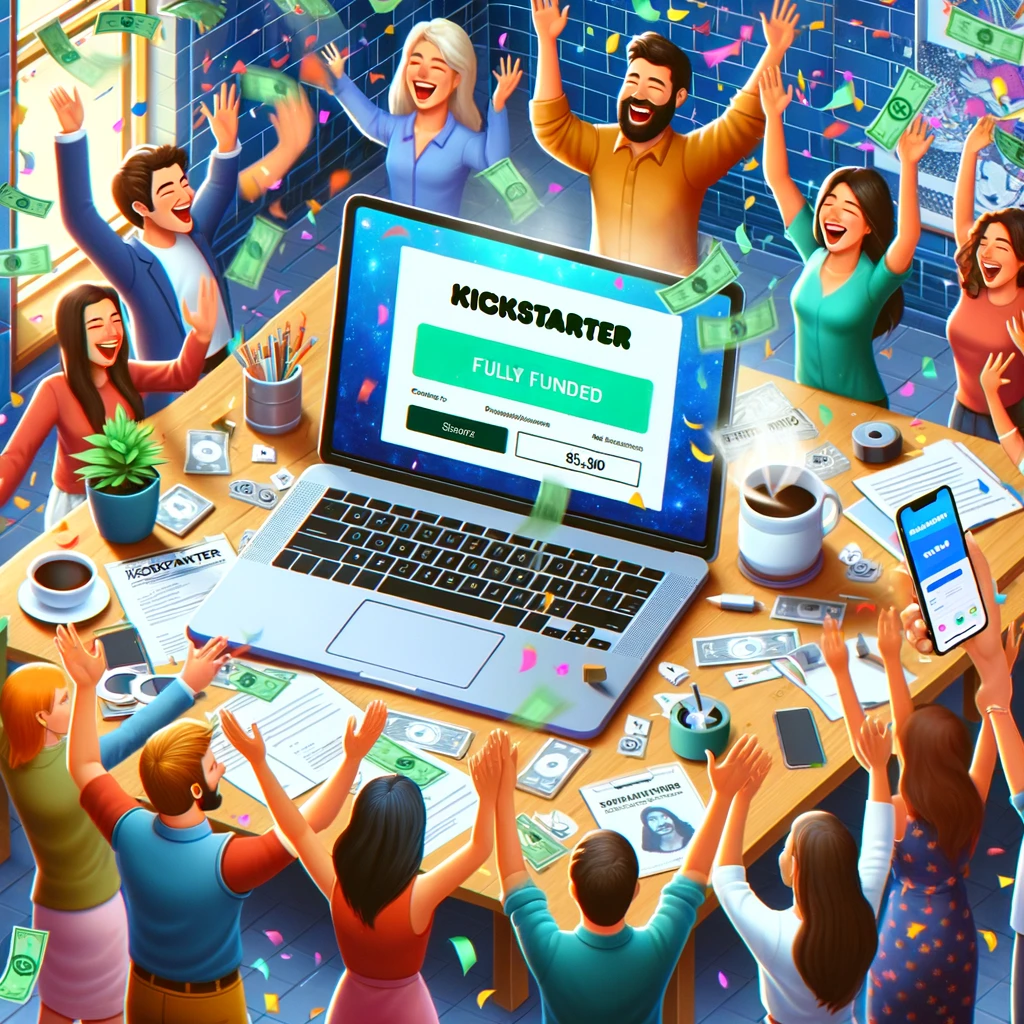Introduction
Imagine the moment when your creative project, the one you’ve poured your heart and soul into, finally hits its funding goal on Kickstarter. The rush of excitement, the sense of achievement, and the realization that your dream is about to become a reality. This isn’t just a dream for many; it’s a tangible goal. But how do you get there?
In this comprehensive guide, we’ll delve into the best practices, tips, and tricks for getting your Kickstarter campaign successfully funded.

Understanding Kickstarter
Kickstarter is more than just a platform; it’s a community of supporters and dreamers. Understanding the dynamics of crowdsource funding is crucial. Here’s what you need to know:
- The essence of Kickstarter: It’s a place where creativity meets financial backing. You post your project and as the internet to pitch in a bit to help you fund your project.
- Community engagement: Why it’s not just about the money.
- Success stories: Learning from those who made it.
Crafting Your Campaign
Your campaign is your story. Telling it in a compelling way is key to how to get your Kickstarter funded. Here are the elements of a successful campaign:
- Creating a captivating narrative. Telling a good story that people can relate to and understand. Making it personal.
- Visuals and presentation: More than just aesthetics. It can’t be sloppy, it needs to make you look professional and capable.
- Setting realistic goals and rewards.
Setting Goals and Rewards
Typically, most Kickstarter campaigns ask for funding from users, and in return, promise the users some sort of reward.
Setting realistic goals and offering enticing rewards are the backbones of any successful Kickstarter campaign. Here’s how to nail this aspect:
- Determine a feasible funding target: Reflect on your project’s needs and set a reachable goal.
- Offer a range of rewards: Cater to different backer levels to widen your appeal.
- Keep rewards relevant: Ensure they are aligned with your project’s theme and values.
Some typical types of rewards you could offer:
Here’s a list of common reward offerings that many Kickstarter campaigns could offer:
Discounts: Access to the final product (e.g., a copy of the game, book, or gadget) at a discounted price.
Giveaways: Offer the core product with exclusive extras like special packaging, artwork, or bonus content.
Merchandise: T-shirts, mugs, pins, stickers, and other branded items are popular choices.
Early Access: Be among the first to use the finished product before it’s publicly available.
Behind-the-Scenes Content: Exclusive updates, insights, and sneak peeks into the creative process.
Personalized Rewards: Handwritten notes, signed copies, personalized video messages, or even custom creations from the creator.
Community Events: Q&A sessions, live streams, workshops, or meet-and-greets with the creator or team.
Collaborations: Collaborate with the creator on artwork, design elements, or even have your name mentioned in the project.
Effective marketing is crucial for your project’s visibility and success in crowdsource funding. Here are strategies to enhance your campaign’s reach:
- Leverage social media: Utilize platforms like Facebook, Instagram, and Twitter for broader outreach.
- Engage with online communities: Be active in forums and groups related to your project.
- Create compelling content: Use videos, blogs, and updates to keep your audience engaged.
Building a strong, engaged community is a cornerstone of Kickstarter success. Here’s how to foster this vital connection:
- Regular updates: Keep your backers in the loop with progress and developments.
- Interactive communication: Respond to comments, messages, and feedback actively.
- Build a story: Let your backers be part of your journey, not just passive observers.
Handling Challenges
Challenges are inevitable in any Kickstarter campaign, but they can be managed effectively. Here’s how to navigate potential hurdles:
- Transparency: Be open about challenges and how you’re addressing them.
- Adaptability: Be ready to adjust your plans based on feedback and circumstances.
- Preparation: Anticipate common issues and have contingency plans in place.
Post-Campaign Strategies
What happens after your campaign ends is just as important as the campaign itself. Here’s how to maintain momentum:
- Fulfillment planning: Ensure you have a solid plan for delivering on your promises.
- Continue the conversation: Keep engaging with your backers even after the campaign.
- Next steps: Use the success of your campaign as a springboard for future projects.
Top Five Tips For A Successful Kickstarter Campaign
Maximizing your chances of success on Kickstarter boils down to some key strategies. Here are the top five tips:
1. Start with a clear, compelling story:
Your narrative should resonate with potential backers.
2. Focus on high-quality visuals:
Attractive images and videos can significantly enhance appeal.
3. Plan your marketing strategy:
Don’t wait until launch day to start promoting your campaign.
4. Engage with your backers:
Regular communication builds trust and fosters community.
5. Be transparent and honest:
Trust is crucial in crowdfunding, so always be upfront.
Success Stories and Key Takeaways
Learning from those who’ve successfully navigated the waters of Kickstarter can provide invaluable insights. Here’s what we can learn:
- Case studies of successful campaigns: Understanding what worked for them.
- Key takeaways: Common themes in successful Kickstarter projects.
- Lessons from failures: Sometimes, the best lessons come from projects that didn’t meet their goals.
Conclusion
Embarking on a Kickstarter campaign is a journey filled with challenges and opportunities. By understanding the platform, crafting a compelling campaign, engaging with your community, and learning from others, you stand a great chance of success.
Remember, every Kickstarter journey is unique, but the principles of transparency, engagement, and preparation remain constant. Embrace these, and you’ll be well on your way to bringing your dream to life.